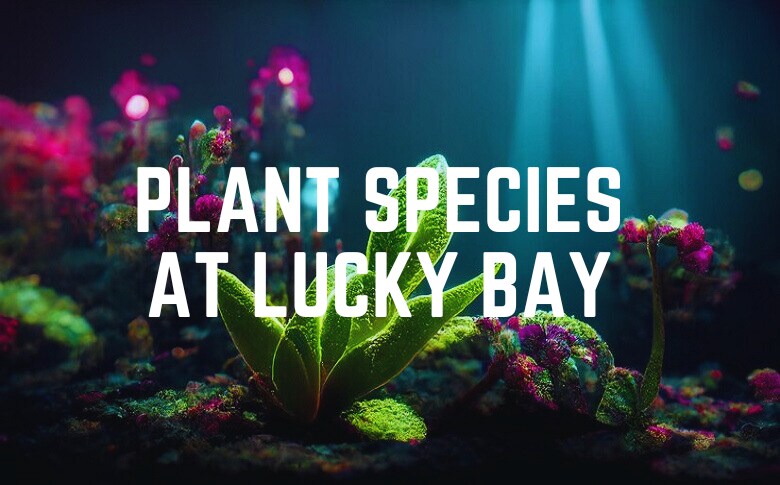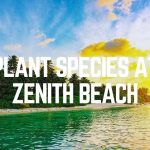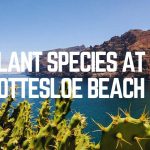Plant Species Present At Lucky Bay
- Coastal Daisy (Olearia axillaris)
- Pigface (Carpobrotus virescens)
- Beach Spinifex (Spinifex longifolius)
- Coastal Wattle (Acacia sophorae)
- Coastal Fan Flower (Scaevola crassifolia)
- Grey Saltbush (Atriplex cinerea)
- Beach Banana (Cyperus papyrus)
- Ruby Saltbush (Enchylaena tomentosa)
- Coastal Banksia (Banksia integrifolia)
- Coast Sword-Sedge (Lepidosperma gladiatum)
Coastal Daisy (Olearia axillaris)
The Coastal Daisy, embellished with white daisy-like blossoms, graces the shores of Lucky Bay, contributing to the coastal flora’s diversity. Its resilience to coastal conditions and capacity to endure salt splash make it an enchanting expansion to the ocean side scene.
Pigface (Carpobrotus virescens)
Pigface, with its delicious leaves and lively blossoms, is a typical sight along the sandy stretches of Lucky Bay. Its ability to withstand coastal winds and sandy soils, along with its eye-catching blooms, improves the visual allure of the ocean side.
Beach Spinifex (Spinifex longifolius)
Beach Spinifex, a robust and tufted grass species, plays an essential part in settling Lucky Bay’s sandy dunes. Its extensive root system helps prevent erosion, adding to the protection of the waterfront scene.
Coastal Wattle (Acacia sophora)
Coastal Wattle, described by its brilliant yellow blooms, is a local Australian bush viewed as an Australian shrub found in Lucky Bay. Its nitrogen-fixing abilities enhance soil fertility, and its splendid blossoms add an eruption of variety to the beachfront vegetation.
Coastal Fan Flower (Scaevola crassifolia)
Coastal Fan Flower, with its fan-formed sprouts, is very much adjusted to the beachfront states of Lucky Bay. Its low-growing habit and salt tolerance make it a valuable ground cover, adding to the general biodiversity of the ocean-side environment.
Grey Saltbush (Atriplex cinerea)
Grey Saltbush, a solid seaside bush, flourishes in the pungent and sandy climate of Lucky Bay. Its silver-grey foliage adds a unique visual element to the beachscape, and its resilience to waterfront conditions upholds the environmental equilibrium.
Beach Banana (Cyperus papyrus)
Beach Banana, with its particular umbrella-like bunches, is a wetland plant tracked down in Lucky Bay’s coastal areas. Its presence contributes to the diverse flora of the region, giving living space and enhancing the biological woven artwork.
Ruby Saltbush (Enchylaena tomentosa)
Ruby Saltbush, known for its red-shaded organic products, is a salt-tolerant shrub found in the coastal landscape of Lucky Bay. Its ability to withstand salty soils and give a food source to nearby fauna makes it a significant part of the ocean-side environment
Coastal Banksia (Banksia integrifolia)
Coastal Banksia, a famous Australian native plant, adds a touch of elegance to Lucky Bay. Its serrated leaves and cylindrical flower spikes contribute to the coastal vegetation’s aesthetic appeal, drawing in local fauna to the area.
Coast Sword-Sedge (Lepidosperma gladiator)
Coast Sword-Sedge, a grass-like plant, is tracked down in Lucky Bay’s coastal areas. Its slender, upright stems contribute to the beachside vegetation, and its versatility to sandy soils upholds the general flexibility of the seaside biological system.
In Summary
Lucky Bay’s coastal flora, featuring coastal daisies and samphires, makes a quiet seaside shelter. The vibrant plant life improves the ocean side’s style, blending seamlessly with the sandy landscape and Southern Ocean views. Each visit is a sensory delight, where the natural beauty of Lucky Bay and its different plant species make an unspoiled break on the Western Australian coastline.
Frequently Asked Questions (FAQs)



Pingback: Lucky Bay Beach, Australia - World Best Place To Visit